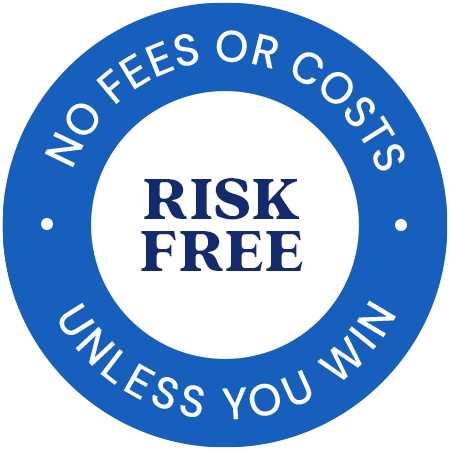Chicago Medical Malpractice Attorneys
At the Illinois medical malpractice law firm of Briskman Briskman & Greenberg, we represent patients and their families affected by negligent medical care. Our compassionate attorneys understand what you are going through during this difficult time and cater our representation according to your unique needs. We will never try to sell you on bringing a medical malpractice lawsuit. We will go over your options with you so that you can make the best decision for yourself and your family.
If You Have Experienced a Medical Error, You Are Not Alone
We have recovered millions of dollars for injured clients, and we are here for you, too.
Covered on this page
Medical malpractice deaths are preventable
Injuries and deaths caused by medical malpractice are all the more distressing because they are preventable. At the outset of their practice, almost all American doctors take an oath to adhere to the guiding principle behind the Latin phrase primum non nocere (meaning “first, do no harm”). When doctors are negligent, they run afoul of this core principle.
Healthcare professionals at all levels can be responsible for medical mistakes, whether it is an overworked physician assistant or a surgeon with decades of experience. According to research published in 2018, new registered nurses with under a year of patient care experience play a role in 49 to 53 percent of medical errors. One in ten doctors reports making a “major medical error” within the past three months. And over 20 percent of patients report experiencing a medical error.
People seeking care should never be injured or lose their lives because of the carelessness of medical personnel, including doctors, nurses and physician assistants. Yet, hundreds of thousands of patients each year suffer new or worsening injuries due to a healthcare provider’s negligence.
Medical malpractice lawsuits serve two important purposes. First, these claims can provide families with meaningful compensation that will allow them to overcome the economic hurdles they face on their road to recovery. Second, by pursuing a medical malpractice claim, you can help set the standard to which healthcare providers are held. Medical malpractice cases ensure the healthcare industry continuously looks for better and more effective ways to treat patients.

We Handle Medical Malpractice Cases At Hospitals Throughout Illinois
Sometimes it is obvious when a medical error occurs. But more often, it is not apparent what exactly caused a patient’s condition to worsen. Too often, when patients suspect a mistake has happened, they have trouble getting answers to their questions from the hospital or medical personnel. This is because these parties are self-interested and do not want their negligence exposed.
When medical malpractice causes an injury or death, the injured person or grieving family deserves compensation for the loss. At Briskman Briskman & Greenberg, we regularly represent patients in the following types of Chicago medical malpractice cases.
If you have experienced a personal injury due to the carelessness of others, you should not have to worry about fees and case screeners. An attorney with Briskman Briskman & Greenberg will talk to you about your case at no cost.
Covered on this page
Misdiagnosis is one of the most common types of medical mistakes
You reasonably assume that as long as you go to the doctor for all scheduled visits and stay on top of your health, that doctors will catch any condition early enough to treat it effectively. However, misdiagnoses and delayed diagnoses are among the leading causes of preventable adverse health outcomes for patients of all ages. Doctors have a duty to order the appropriate testing and correctly interpret the results of the tests they order. If a doctor misdiagnoses or fails to diagnose a serious medical condition, you can pursue a Chicago medical malpractice lawsuit against them.
About 12 million people are misdiagnosed per year, with the potential for severe harm in nearly half of those cases. Despite these statistics, misdiagnosis is still believed to be severely underreported in the United States.
Misdiagnosis errors are particularly common in cancer patients
Infections, cancers and vascular conditions accounted for almost 75 percent of all serious harm related to misdiagnosis. Over one-third of the misdiagnosis errors resulting in death or permanent disability were linked to cancers.
Misdiagnosis can be difficult to uncover fully without a lawsuit. When we represent you in a medical malpractice lawsuit, we will not rest until we find the facts and get you the compensation you deserve.
If you suspect you developed new injuries or your condition worsened due to medical malpractice, call Briskman Briskman & Greenberg for a free consultation to discuss your rights. We can advise you as to whether a medical malpractice lawsuit is in your best interest, and if we represent you in such a lawsuit, we will use the legal process to uncover the facts about what happened and get you the answers and compensation you deserve. We have decades of experience handling medical malpractice lawsuits, so we are confident that we can obtain the best outcome possible in your case.
If you suspect medical malpractice has caused you harm, then you should call us for a free consultation about your rights. We can advise you as to whether a medical malpractice lawsuit is in your best interest, and if we represent you in such a lawsuit, we can and will use the legal process to uncover the facts about what happened and get you the answers and compensation you deserve. We have decades of experience handling medical malpractice lawsuits, so we are confident that we can obtain the best outcome possible in your case.
Covered on this page
How Long Do I Have to Bring a Chicago Medical Malpractice Lawsuit?
Under Illinois law, all personal injury cases, including medical malpractice claims, must be filed within a certain period of time, as outlined in the statute of limitations. Patients must bring a claim of medical malpractice within two years from the date of treatment. However, lawmakers understand that medical malpractice cases are different from other types of personal injury cases in that a patient may not know they received negligent medical care until years after the care was rendered. Thus, the statute of limitations in a medical malpractice lawsuit does not begin until a patient learns that they may have a claim against a provider.
That said, Illinois also imposes a state of repose, which prevents any medical malpractice claim from being filed more than four years after the date of treatment. However, if the patient was a minor, the statute of repose does not begin until they turn 18, giving minors until 22 to file a claim.
There may also be exceptions if you continue to receive treatment from the allegedly negligent provider. This is because, while the same doctor is treating you, you cannot expect to learn of the provider’s negligence. Similarly, if a provider engages in fraud, the statute of limitations may be extended.
Speak With a Knowledgeable Chicago Medical Malpractice Attorney Today
If you, your child or another loved one suffered at the hands of a negligent doctor, nurse, pharmacist or another medical provider, reach out to Briskman Briskman & Greenberg to schedule a free consultation. We have over three decades of experience bringing claims on behalf of injured patients and know what it takes to investigate, prepare and litigate these complex cases successfully. Over the years, we have successfully held some of the largest and most powerful medical providers accountable for their negligent actions.
At Briskman Briskman & Greenberg, our promise is simple. You will not pay attorney’s fees unless we make a financial recovery for you in your medical malpractice case. We do not get paid unless you get paid.
When we say we will be there for you, we mean it. You will have an experienced lawyer handling your case. We believe that you should talk to a decision-maker at the firm, not a case screener. An attorney will analyze your situation and advise you of your rights.
There is never a cost to speak with an attorney about your case. Do not delay getting your free legal consultation: if you fail to pursue your claim in time, your rights could be lost forever. Call Us Today at 1.877.595.HURT (4878). You can also connect with us through our online contact form, and one of our Chicago medical malpractice attorneys will reach out to you shortly.




SEEN ON:








